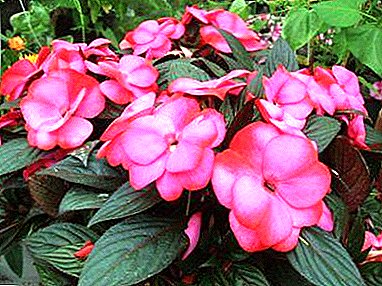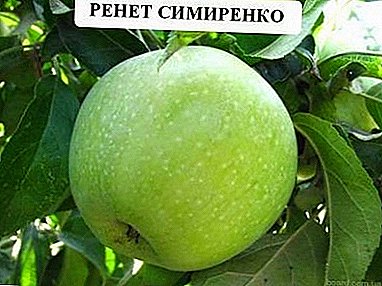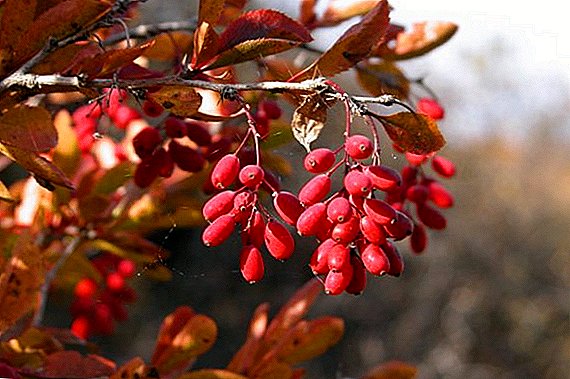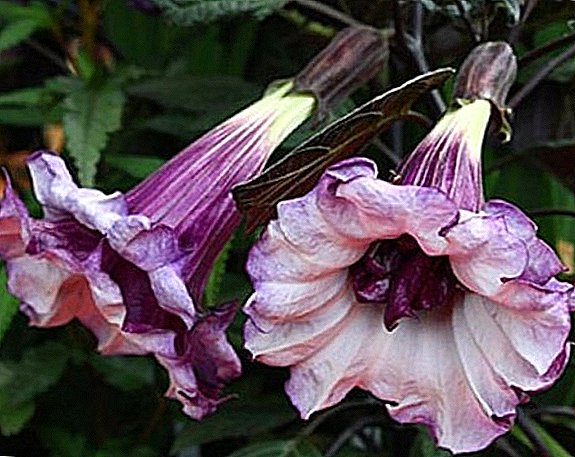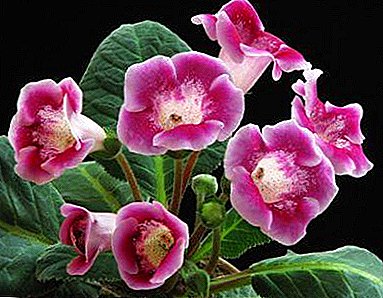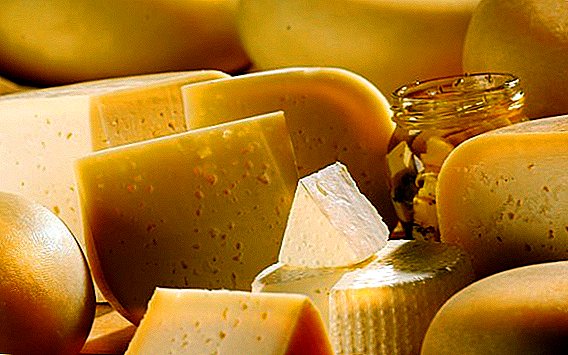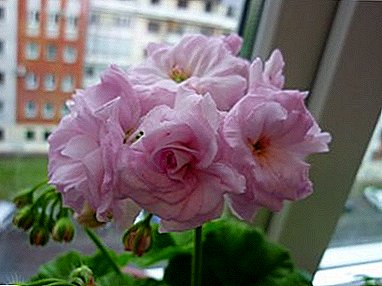
Among the flowers grown in Russia, Pelargonium Milfield Rose is a special love and popularity among gardeners.
This is caused by the beautiful flowers of the plant and the ease of caring for it. The article will consider the botanical characteristics, the history of occurrence, as well as the description of appearance.
We learn how to properly care for pelargonium milfield rose, as well as explore the characteristics of reproduction.
Botanical characteristics, history and price
Pelargonium (lat. Pelargōnium) is a genus of plants of the family geranium. This is one of the favorite and widespread plants. Unfortunately, they are sometimes mistakenly called geraniums. In representatives of the present geranium, the flowers are absolutely correct (with several planes of symmetry), in pelargonium, the flowers are two-sidedly symmetrical (they have only one plane of symmetry).
In nature, pelargonium is distributed throughout South Africa, biodiversity is about 350 species.
A prominent representative of this genus is pelargonium milfield rose. It belongs to the group of "Ivy-hybrids". This plant is a hybrid of zonal and ileum pelargonium. This hybrid has signs of both ileal and zonal pelargonium, which is reflected in the shape of its leaves and the nature of the growth of shoots.
Appearance Description
This pelargonium flowers are very similar to real roses.
- The plant has a bush form.
- Quite voluminous and heavy inflorescences consist of double pale pink flowers.
- Stems branched, covered with a sufficiently large number of leaves.
- Under good lighting conditions, zonality is noticeable on the leaf plates (brown zone).
- The fruit is a box with preserved sepals.
Plant photo
Here you can see photos of Pelargonium Mildfield Rose:





Landing: rules and tips
When grown in conditions of central Russia, these plants are planted in open ground no earlier than the beginning of June. Before planting, pelargonium is well moistened.
When growing in a flower garden, it is not worth thickening the planted plants. The optimum number of plants is 12 pieces per square meter. During the first two weeks after planting, pelargonium must be watered frequently, in order to root the plants better.
When planting in open ground pelargonium preferably planted on raised beds or slides.
Lighting and location
Illumination plays a very important role in the cultivation of pelargonium milfield rose. The plant needs a fair amount of light. for normal growth and flowering.
With a lack of lighting, the growth of pelargonium can slow down or stop altogether. Lack of sunlight leads to a weakening of the plant, which entails susceptibility to diseases and various pests. The plant should be in a well-lit place. In very hot summer days it is desirable to shade the plant from direct sunlight.
In winter, the use of additional lighting is recommended, which will ensure year-round flowering (when kept in warm conditions). To create a uniformly developed crown, you need to unfold the plant pot 90 degrees every other day.
Soil requirements
 For good growth and full development for pelargonium, milfield rose requires loose, nutritious and well-moistened soil. You can buy ready-made soil for pelargonium, you can also prepare the soil yourself. At the bottom of the flower pot must necessarily put a layer of drainage - expanded clay.
For good growth and full development for pelargonium, milfield rose requires loose, nutritious and well-moistened soil. You can buy ready-made soil for pelargonium, you can also prepare the soil yourself. At the bottom of the flower pot must necessarily put a layer of drainage - expanded clay.
The composition of the soil for the cultivation of Pelargonium Millfield rose:
- two pieces of turf soil;
- two parts of peat;
- two parts of humus;
- one piece of coarse sand.
When using components of the substrate taken on the street, it is desirable to disinfect them.as they may be infected by pests and fungi.
Attention! Pelargonium does not tolerate waterlogging and stagnation of moisture in the soil. This can lead to decay and death of the plant.
How to care?
Temperature conditions
This type of pelargonium needs to be grown at a moderate temperature. The best conditions will be its cultivation in the room:
- in summer, at temperatures from +20 to +25 degrees;
- in winter at + 12-15 degrees.
With a dry content in winter, they withstand a drop in temperature to + 8 ° С. Pelargonium milfield rose does not tolerate sharp daily temperature drops.
Watering
 In the summer, at home, the soil should be moistened 3-4 days after the topsoil has dried. You can check by diving your finger 1-2 cm into the substrate.
In the summer, at home, the soil should be moistened 3-4 days after the topsoil has dried. You can check by diving your finger 1-2 cm into the substrate.
In winter, watering is carried out in such a way that the ground simply does not dry out. When overmoistening the soil at low temperatures, rapid rotting of the plant root system is possible.
Spraying
Pelargonium tolerates dry airtherefore it is not necessary to spray it.
Fertilizer
Top dressing is carried out with the aim of improving flowering, for this purpose phosphate fertilizers are used. Fertilizing with organic fertilizers is undesirable because the plant does not absorb them well.
Pruning
In room conditions, Pelargonium milfield rose is pruned annually, leaving shoots with only 2-4 nodes. This is done to get a lush flowering shrub. The plants need to remove dried and yellowed leaves.
Cutting and removing leaves is carried out only with a very sharp knife., and by no means tear off the leaves, since the torn edges may start to rot. For the purpose of disinfection, the cut site is treated with crushed charcoal.
Pruning is carried out so that the base of the stem is left on the plant. If in time not to tie flower stalks and not to form a plant, it quickly becomes ampel.
Common diseases and pests
 The main pests are:
The main pests are:
- cyclamen mite;
- pelargonium aphid;
- spider mite
These pests are successfully destroyed with insecticides. With timely pest control, it is possible to preserve plants without much damage to them.
With improper care, pelargonium can be damaged by gray mold and rust. To combat them there is a wide range of fungicides.
Breeding features
Plargaria milfield rose refers to zone varieties, although it is hybrid, therefore it is possible to have both a cutting and seed propagation.
Breeding methods:
- Most gardeners rooted pelargonium cuttings right in the winter, for this purpose they plant the cuttings of the plant in sand or perlite and moisturize. Cutting cuttings carried out with the queen cells, wintering at a temperature not higher than + 12 ° C.
Pelargonium cuttings rooted from January at + 16 ° C, even at this ambient temperature, the roots of the plant begin to form. Then the air temperature in the room is raised to + 20 ° C. In cuttings, the formation of the root system occurs after 3 weeks. After the formation of the root system, plants are transplanted into pots.
- Sowing seeds carried out from December to February. For this, the soil should consist of coarse sand and peat or one peat. Shoots appears after 3 weeks. At this time, the soil must be regularly irrigated. Cover the container with the substrate should be covered with a film.
After the shoots have reached the stage of three true leaves, they need to be dived into separate pots. To make a bushy plant need to pinch over the 6th sheet.
Subject to competent agricultural practices and caring care Pelargonium Milfield Rose will delight flowering and become a real decoration of your home. This plant does not require special care, but the implementation of the basic rules is mandatory for growing beautiful and healthy plants.


